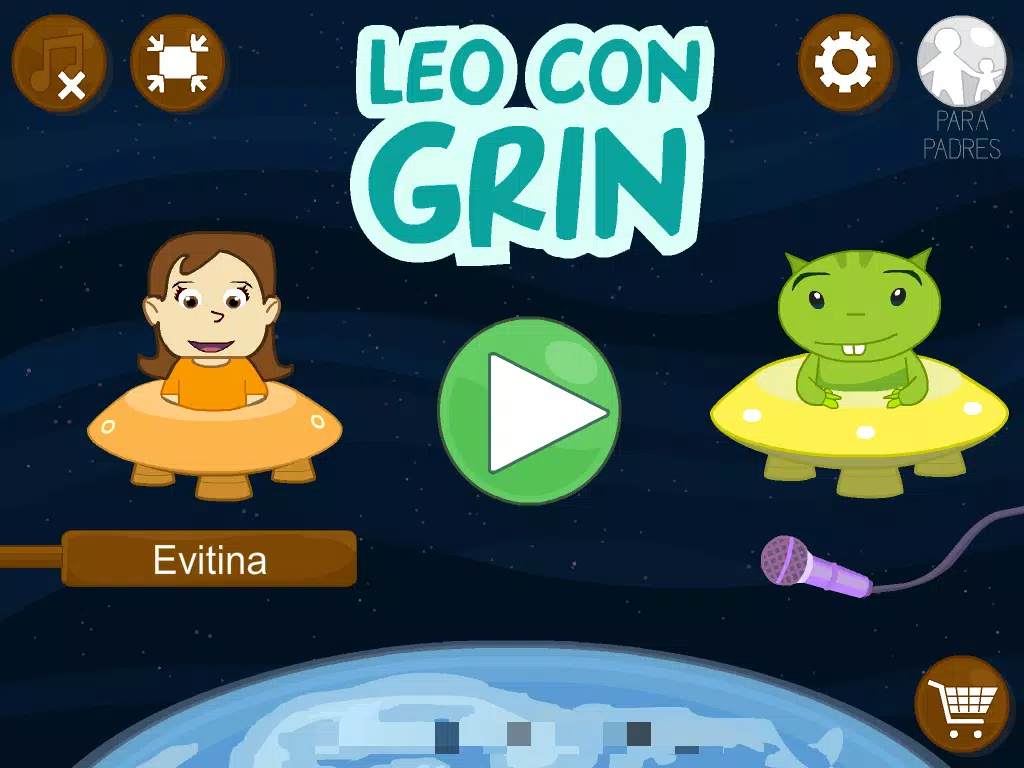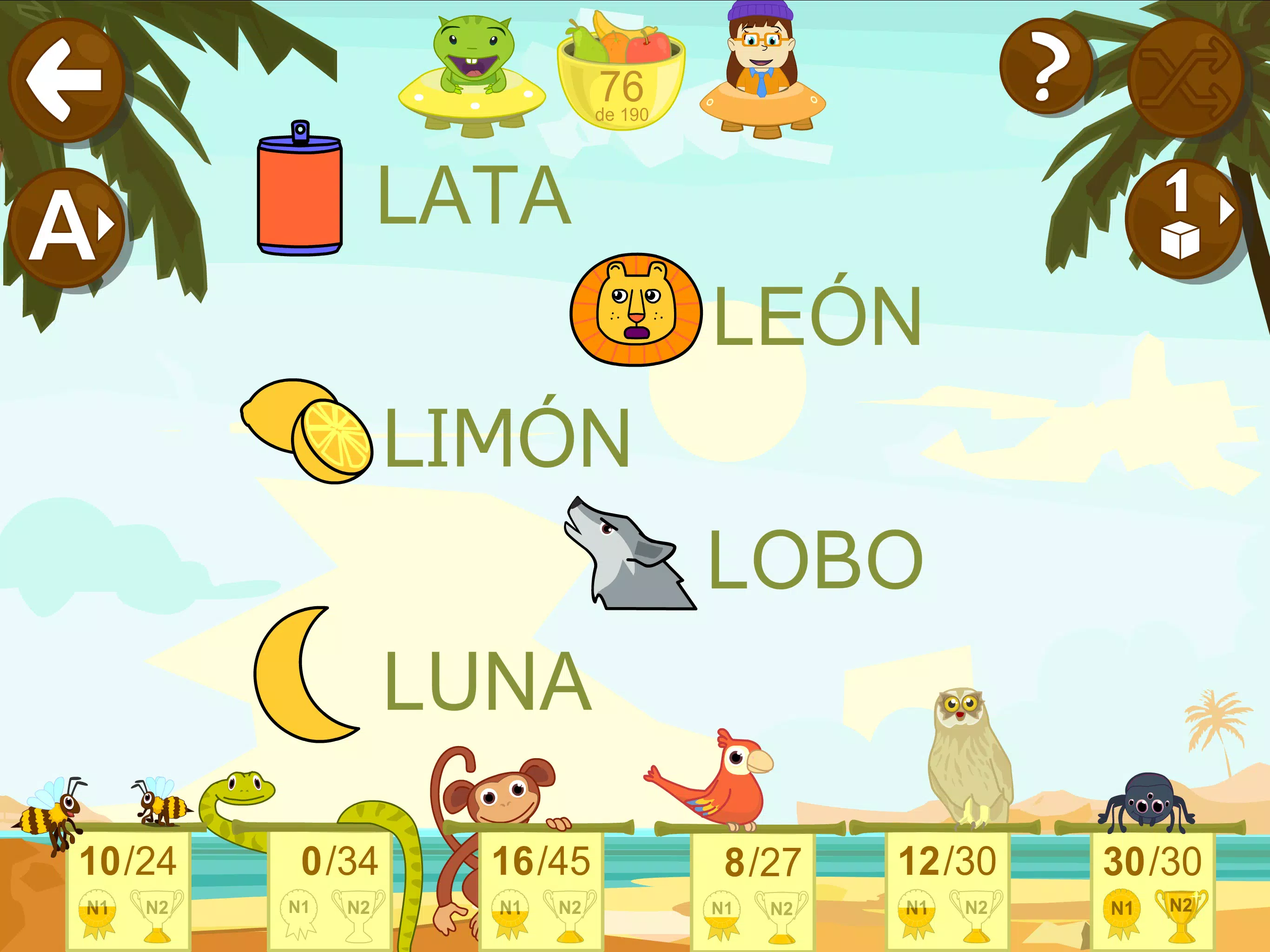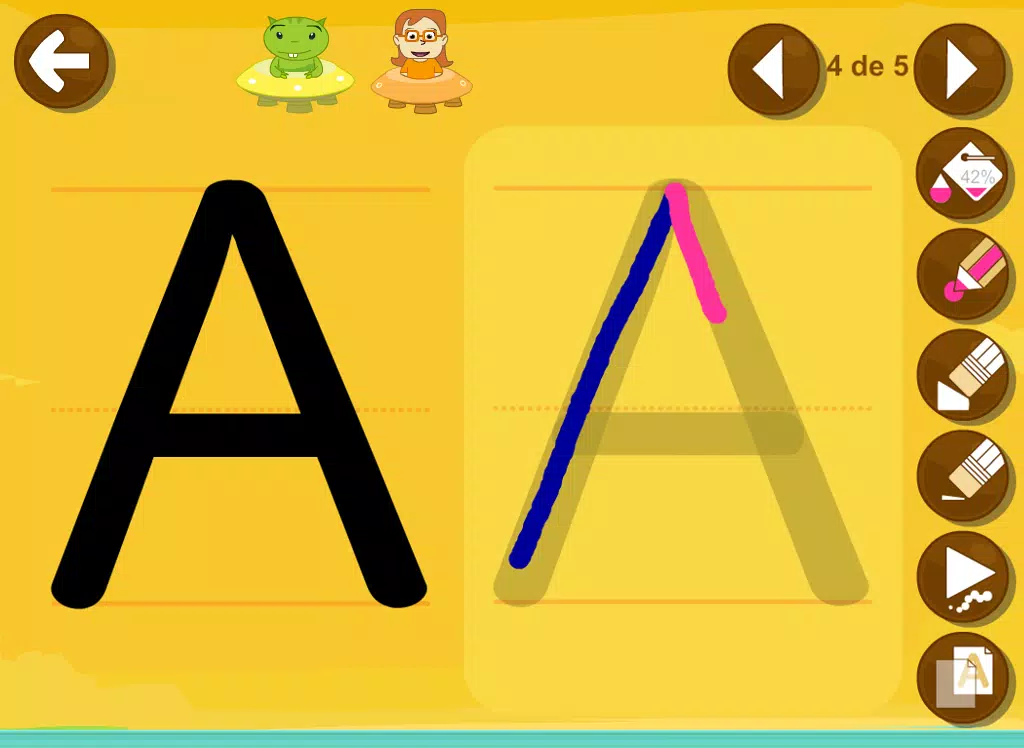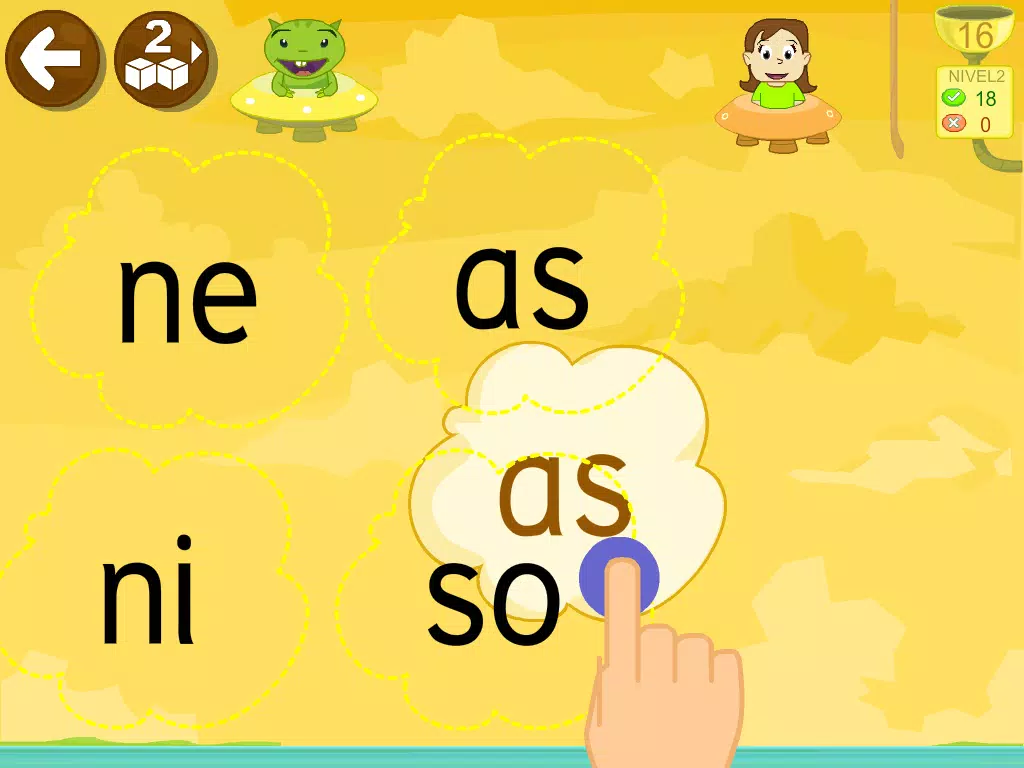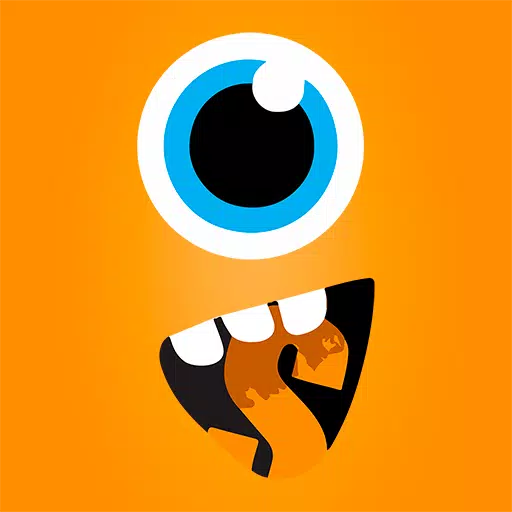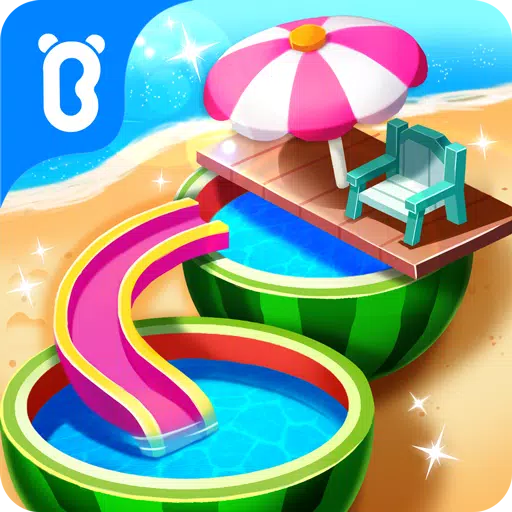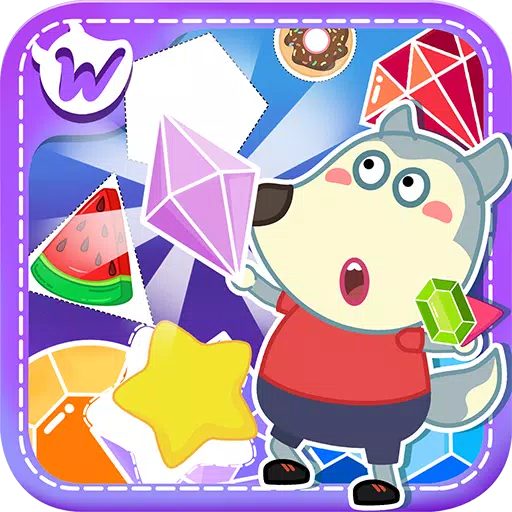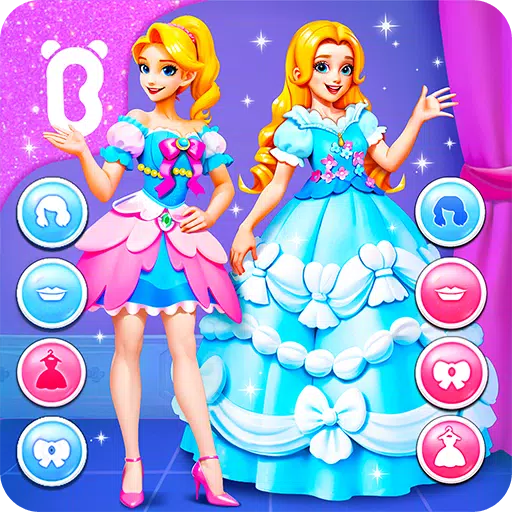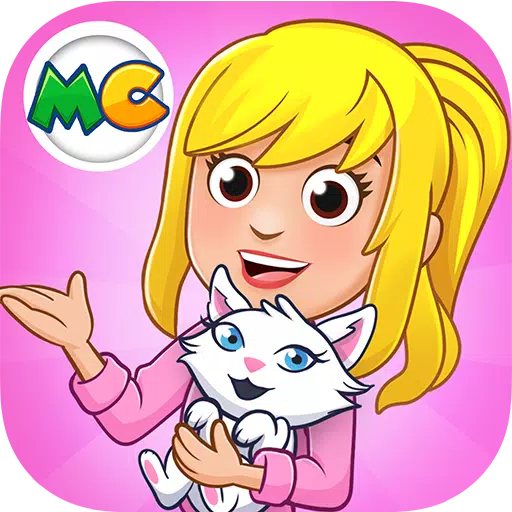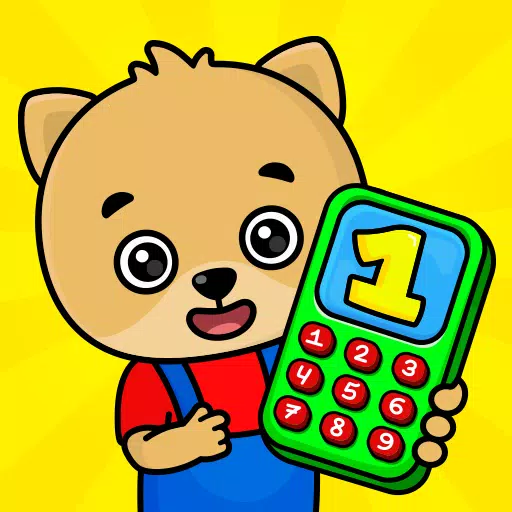Learning to read Spanish and write the alphabet is a crucial skill that lays the foundation for a child's educational journey and future success. This skill is essential from preschool through the early years of elementary school and remains vital throughout adulthood.
Children today are digital natives, naturally drawn to computers and tablets. Leveraging their interest in technology can enhance their learning experience, reinforcing what they are already studying in school.
Method
Our method, "Learn to Read Spanish with Phonics," is tailored for children aged 3 to 6 or 7, and it's also suitable for adults looking to improve their pronunciation. The program is structured into a section for tracing letters and 30 lessons. These lessons start with vowels and progress to consonants and combinations such as L, M, S, T, P, N, D, F, H, C, Q, CH, G, GUE, R, -rr-, B, V, J, GE, GUE, Y, Z, CE, LL, X, K.
Each lesson includes 11 engaging games, available at two different levels. This setup is perfect for parents and educators who want to practice initial syllables and words in Spanish with their children. Encourage the child to listen and engage with the exercises; full comprehension isn't necessary at this stage.
Reading acquisition is a gradual process that may span over a year. We recommend daily practice sessions of a few minutes, occasionally revisiting previously learned material, and adjusting the type and difficulty of exercises. It's essential that the learning process feels like a game to keep it enjoyable.
Levels
All games feature two adjustable difficulty levels. Children can progress at their own pace, pausing and resuming at their convenience. As they complete games, they earn fruits as rewards.
The first level is appropriate for three-year-olds and sometimes even younger children with assistance from parents or educators. At this level, solutions are supported by the game's instructions. The second level is more challenging, encouraging children to solve problems independently while ensuring the learning remains fun.
We advise parents and guardians to set the difficulty level according to the child's abilities, avoiding excessive pressure to complete or advance levels.
Abilities
This program enhances several key skills:
- Visual and auditory memorization
- Identification and Association
- Discrimination
- Understanding
- Literacy
Options
On the home screen, users can:
- Enable or disable background music
- Choose to play in full screen
Within the Tikis menus, additional options include:
- Changing the font to uppercase, lowercase, or cursive handwriting
- Enabling or disabling automatic activity switching after a set number of exercises
- Shuffling syllables for varied practice
Achievements
The program allows for up to three profiles (avatars) per child, tracking progress, correct and incorrect answers, and displaying achievements as a percentage in the form of fruits. These fruits serve as a fun motivator for continued engagement. Once collected, children can "give" them to little aliens by clicking on the basket.
For a detailed overview of progress, users can press the "reports" button on the Tikis screen.
Games
NEW THE ALPHABET:
This feature allows children to listen and practice writing each letter of the alphabet, syllables, and some words in various modes: trace, copy, and free mode. Users can choose between uppercase, lowercase, and handwriting styles.
Each lesson includes 11 interactive games:
- DOLPHIN: Introduces the word and its components.
- BALLOONS: Identifies the letters of the syllable.
- CLOUDS: Focuses on the shape of each syllable.
- CRABS: Forms syllables from letters.
- BUTTERFLIES: Identifies syllables.
- BEES: Identifies the initial syllable of words.
- SNAKE: Forms words using syllables.
- MONKEYS: Forms words from letters.
- PARROTS: Recognizes and reads words.
- MOUSE: Orders words and reads sentences.
- SNAILS: Constructs sentences from words.
For feedback or technical queries, please contact: [email protected]
Tags : Educational


